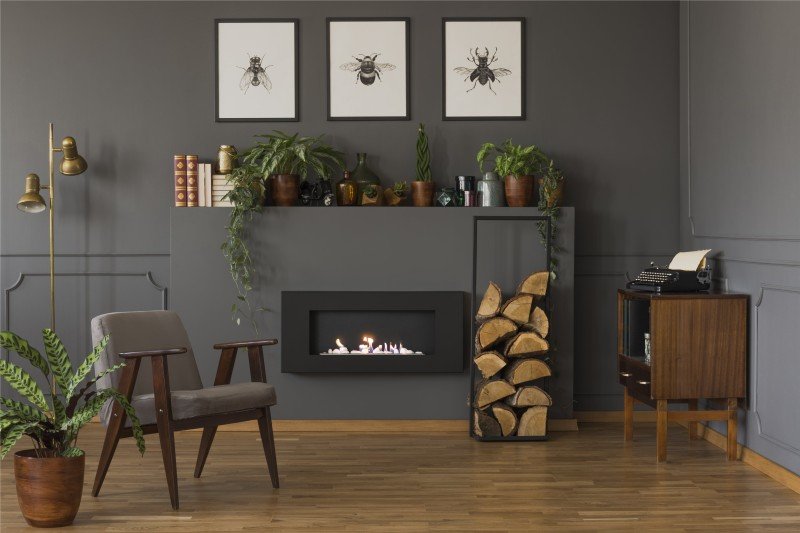fireplace6170
fireplace6170
Guide To Small Fireplaces: The Intermediate Guide Towards Small Fireplaces
A Comprehensive Guide to Small Fireplaces: Efficient Heating and Cozy Living
In an era where energy efficiency and area optimization are becoming increasingly essential, small fireplaces have emerged as an enticing alternative to traditional, large hearths. These compact heating options offer warmth and a focal point for any space, heightening both convenience and aesthetic appeal. This post explores the various types of small fireplaces, their benefits, setup considerations, and upkeep pointers, eventually assisting house owners make notified choices when considering these charming heating choices.
Understanding Small Fireplaces
Small fireplaces offer a range of styles, consisting of electric, gas, ethanol, and wood-burning models. Each type presents distinct benefits and design possibilities, making them ideal for different living spaces.

Types of Small Fireplaces
| Fireplace Type | Description | Pros | Cons |
|---|---|---|---|
| Electric | Utilizes electrical power to create heat. Offers numerous designs, consisting of wall-mounted and freestanding systems. | – Easy to install – Low maintenance – No venting needed |
– Limited heat output – May sustain greater electrical power expenses |
| Gas | Burns gas or propane. Frequently offered as logs in a traditional fireplace or modern styles. | – Efficient heat output – Cleaner than wood – Easy ignition |
– Requires gas line setup – Some units need venting |
| Ethanol | Burns bioethanol, providing real flames without a chimney. | – Eco-friendly – Portable – No installation needed |
– Limited heat output – Higher fuel costs |
| Wood-Burning | Traditional fireplaces that burn fire wood. Typically used in more rustic settings. | – Great heat output – Rich ambiance – Can be used throughout power outages |
– Requires a chimney – Regular maintenance and cleansing |
Advantages of Small Fireplaces
- Area Efficiency: Small fireplaces are ideal for homes, condominiums, and smaller homes. They optimize heat without using up excessive flooring space.
- Cost-Effective Heating: In certain cases, small fireplaces can supplement central heating systems, lowering overall energy expenses while creating a more comfy environment.
- Ambiance and Aesthetics: They provide an inviting centerpiece to a room, producing a cozy atmosphere perfect for relaxation and social events.
- Flexibility: Available in numerous designs and styles, small fireplaces can complement any decor, from modern minimalist to rustic traditional.
Setup Considerations
When considering a small fireplace, setup is a crucial aspect that can impact the choice of design. Below are handy factors to consider:
- Local Regulations: Building codes can differ by location; always inspect regional standards before installation.
- Ventilation Needs: Depending on the type, small fireplaces might need various ventilation systems. Gas fireplaces may need venting outdoors, while electric models do not.
- Power Source: Electric designs need proximity to electrical outlets, while gas and ethanol designs might need a gas line or fuel storage.
- Weight and Structure: Installing wall-mounted units may require enhanced wall locations, whereas free-standing designs are much easier to move.
Maintenance Tips
Like any other home device, small fireplaces require regular upkeep to work effectively and safely. Here are essential maintenance ideas for different fireplace types:
For Electric Fireplaces:
- Cleaning: Wipe down the unit with a soft cloth to get rid of dust and keep the heating unit ducts clear.
- Assessment: Check the power cord frequently for any damages or indications of wear.
For Gas Fireplaces:
- Annual Inspections: Schedule annual evaluations by a professional to ensure safe gas circulation.
- Tidy the Logs: Regularly clean the burner and logs to keep ideal performance.
For Ethanol Fireplaces:
- Fuel Storage: Store ethanol fuel securely away from direct sunlight and heat sources.
- Regular Cleaning: Clean the burner after each use to preserve performance and prevent soot accumulation.
For Wood-Burning Fireplaces:
- Chimney Sweeping: Have the chimney professionally cleaned once a year to avoid creosote buildup.
- Fire wood Storage: Only use dry, skilled wood to minimize smoke and promote efficient burning.
Frequently Asked Questions
1. Can I install a small fireplace myself?
While some electric and ethanol fireplaces are fairly easy to install, it is advisable to employ an expert for gas and wood-burning units to guarantee compliance with local building regulations.
2. How much does it cost to run a small fireplace?
The expense will differ depending on the kind of fireplace. Normally, electric fireplaces might sustain greater electrical energy costs, while wood-burning alternatives can draw from eco-friendly firewood supplies.
3. Do I need an authorization for setup?
Authorizations are usually needed for gas and wood-burning fireplaces due to their installation intricacy and safety guidelines. Always talk to local authorities.
4. How long can I run an electric fireplace?
Many electric fireplaces can run for extended periods; however, it’s suggested to follow producer guidelines to avoid getting too hot or harming the unit.
5. What kind of small fireplace is best for a small area?
This mostly depends upon private requirements. Electric models are flexible and simple to set up, while gas and ethanol options offer real flames with efficient heat output.
Small fireplaces represent a practical and stylish alternative for those seeking efficient heating options in compact home. With numerous types offered, property owners can pick models that line up with their visual choices and area requirements. By comprehending the installation procedures and regular maintenance required, people can delight in the comfort and ambiance that small fireplaces use for many years to come. Whether for a cozy night at home or an inviting area for events, small fireplaces are a long-lasting element of modern and traditional design alike.



